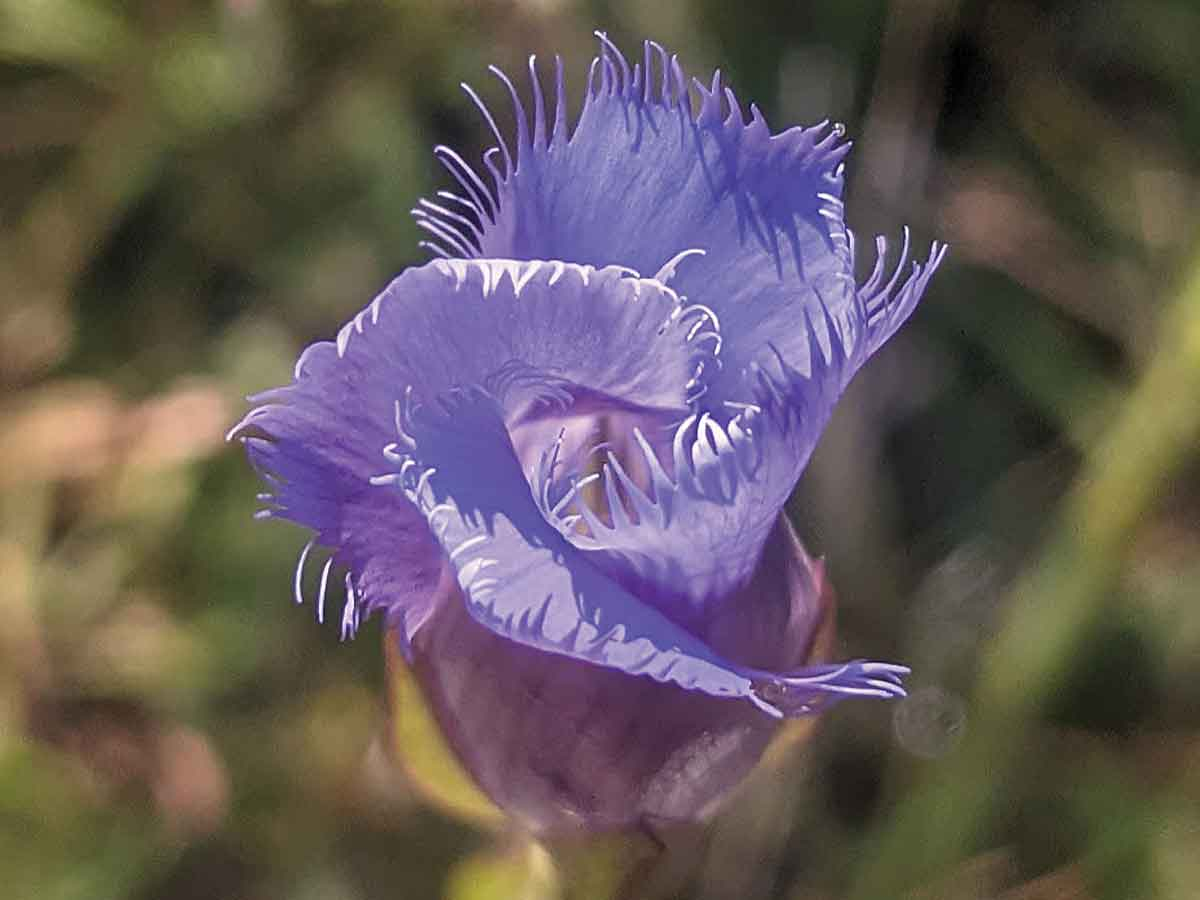Notes from a plant nerd: Gentians, pronounced like ‘gen-shun’
 Like other gentian species, the fringed gentian, Gentianopsis crinite, has blue-to-purple flowers that grow in tubular form. Adam Bigelow photo
Like other gentian species, the fringed gentian, Gentianopsis crinite, has blue-to-purple flowers that grow in tubular form. Adam Bigelow photo
It used to be, when I was first getting into wildflowers, that I would see the gentians begin to bloom, and my heart would sink a bit. The melancholy would start to grow, and I’d get a little sad knowing that the end of the wildflower season was getting near. See, I consider gentians to be the last wildflower to bloom in the fall. Now I know that this isn’t exactly true, as the flowers of witch-hazel, Hamamelis virginiana, only start blooming in the fall and can continue to bloom through December.
Gentians still signify the end of the wildflower season for me, here in Southern Appalachia. Beginning with the trout-lilies which I have seen blooming as early as the fifth of February up this one special spot in Cullowhee, there blooms such an array and diversity of flowers in the woods around us that I learn and see new flowers every year, and every season, and I’ve been studying them for 20 years.
There are three different botanical genus names for the different gentians that grow in these mountains. All of them have blue to purple flowers that grow in a tubular form. There are the bottle gentians, soapworts and striped gentians of the Gentiana genus, of which there are 10 different species in N.C. There is one species each in the Gentianopsis and Gentianella genera, and both are beautiful and special flowers.
The stiff gentian, Gentianella quinquefolia, grows as a cluster of small, deeply purple flowers and have multiple branches loaded with flowers on each stem. They are common throughout the mountains, in fields and roadsides at mid to higher elevations. These are the smallest individual flowers of all the gentians around us and are often accompanied by native grasses and taller wildflowers like goldenrod and aster. Their flowers form a closed tube that looks like it hasn’t fully opened yet. But it doesn’t appear that way to the bees who pollinate it, knowing that there is plenty of pollen and nectar to be found inside the flower tube.
Perhaps the most rare and beautiful of the gentians native to Western North Carolina is the fringed gentian, Gentianopsis crinita. This plant, which is quite common on both sides of the Great Lakes in the northern U.S. is found in maybe only four counties in the mountains of North Carolina, and two corresponding counties just south in the North Georgia hills. Their light purple, open and fancy, fringed petal-tipped flowers are possibly the most beautiful in our woods. Doesn’t hurt that they share habitat with the equally stunning grass-of-Parnassus Parnassia grandifolia.
One of the most hilarious things about seeing the flowers of the Gentiana genus is watching the big ol’ bumblebees prying open their flower tubes, climbing inside to drink nectar and inadvertently pollinate the flower, and then backing their bumble-butts out of the flower to fly off and go visit another. The flower closes behind them completely when they go in and takes a while to fully close after they’ve gone.
Related Items
Turns out, that in the time it takes for the flower tip to slowly close back tight, the gentian can replenish the nectar it provides at the base of the flower as a reward for pollination. Bumblebees who are foraging for nectar can tell if it is worth it to take the time to climb inside by how open or closed the flower tip is. If it is too easy to climb inside, there won’t be much nectar, as it has just been visited. So, they’ll fly on to check the next flower in the group. When they alight on a fully closed flower, the bumblebee will pry open the petal tube and disappear inside. Sometimes, late in the day, they’ll just decide to stay the night inside the gentian flowers like it’s a roadside motel.
I don’t get so sad anymore when I see the gentians bloom, even though they do still signify the last wildflower to bloom for me. It must come with getting older. For instead, I welcome the end of wildflower season, and embrace the long beautiful quiet of winter, going dormant like the plants and trees that I love.
(Adam Bigelow lives in Cullowhee and leads weekly wildflower walks and ecotours through Bigelow’s Botanical Excursions. This email address is being protected from spambots. You need JavaScript enabled to view it..)









